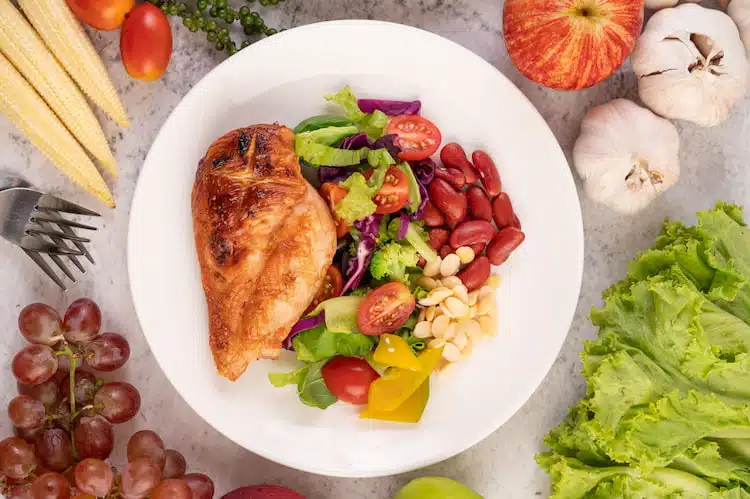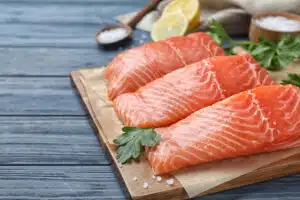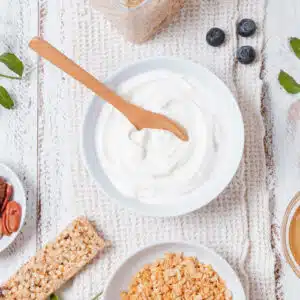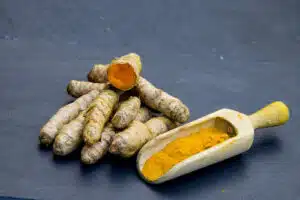
Are you striving to reach that next personal best, pushing the limits in your training? Fueling your body with proper diet and nutrition can help you reach new athletic heights. This is where superfoods come in—these nourishment powerhouses bring essential vitamins, minerals, and other beneficial compounds.
The benefits of superfoods for athletes range from enhanced physical performance and fitness to boosted recovery and improved overall health. This blog explores ten superfoods with some superfood recipes for athletes that you should consider adding to your diet.
Don’t let their size fool you—blueberries come bursting with nutrients and antioxidants. Boasting a high oxygen radical absorbance capacity score, they contain high amounts of antioxidants. They help protect cells from free radicals that contribute to chronic diseases like cancer and inflammation.
Blueberries also contain vitamin C and fiber. Vitamin C helps strengthen our immune system. It also helps in collagen production, tissue repair, and recovery after intense workouts. Fiber helps with digestion, keeps you fuller for longer, improves gut health, and aids in weight management.
Ways to Use Blueberries

Salmon is a delicious, satisfying, and nutritional powerhouse that deserves to be on every athlete’s plate. It’s rich in omega-3 fatty acids EPA and DHA, which are crucial in reducing inflammation and aiding muscle recovery after intense workouts. Salmon also contains protein, which helps rebuild and strengthen muscles.
It also contains essential vitamins like B12 and D. Vitamin B12 plays a crucial role in energy production, and vitamin D supports bone health and immune function.
Ways to Use Salmon
Spinach comes packed with essential vitamins and minerals, which can significantly improve athletic performance and overall health. It is especially rich in iron, a mineral vital for transporting oxygen throughout the body. This ensures your muscles receive the oxygen they need, especially when you’re doing endurance sports or activities.
It also boasts a powerful vitamin trio: vitamins A, C, and K. Vitamin A supports healthy vision; vitamin C strengthens the immune system; vitamin K supports bone health and helps prevent injuries. It also contains folate, which aids in cell growth and development.
Ways to Use Spinach
Cultivated in the Andes mountains of South America, quinoa is considered a superfood for its rich nutritional content. As a seed and protein source, it packs all nine essential amino acids crucial for muscle building and repair. It’s especially rich in lysine, an essential amino acid for muscle protein synthesis.
Additionally, quinoa contains dietary fiber, which keeps you fuller, aids digestion, and improves gut health. It also contributes to weight management.

Ways to Use Quinoa
Small yet full of nutrients, chia seeds contain various nutrients that can significantly improve athletic performance. Surprisingly, chia seeds contain omega-3 fatty acids, particularly alpha-linolenic acid, which reduces inflammation and aids muscle recovery. Chia seeds also contain antioxidants, which fight off free radicals, reduce cell damage, and promote overall health.
Chia seeds contain soluble and insoluble fiber. Soluble fiber helps regulate blood sugar, keeping you full longer, while insoluble fiber promotes gut health. These seeds also offer a decent amount of plant-based protein, making them ideal superfoods for athletes who practice vegetarian, vegan, or other plant-based diets.
Ways to Use Chia Seeds

Greek yogurt is more than a delicious and healthy breakfast option; it improves athletic performance and recovery. It boasts more protein than regular yogurt, making it a fantastic post-workout treat.
It is packed with live and active cultures, also known as probiotics, contributing to gut health. It also provides calcium, which is crucial for sturdy bones and helps prevent fractures and other sports injuries.
Ways to Use Greek Yogurt
Almonds are packed with nutrients. They contain healthy monounsaturated and polyunsaturated fats, contributing to sustained energy and heart health. They also offer a decent amount of protein.
These nuts also contain vitamin E and magnesium. Vitamin E helps protect you from free radicals, and magnesium is involved in various bodily functions, such as energy production and muscle function.
Ways to Use Almonds
You can always choose regular potatoes, but sweet potatoes will better fuel your body for peak athletic performance. These brightly colored tubers are loaded with essential nutrients and complex carbohydrates, which provide sustained energy to keep you fueled throughout the day.
Sweet potatoes are rich in vitamins A and C. Vitamin A helps with healthy vision, and vitamin C strengthens immune function. Sweet potatoes also contain dietary fiber, helping regulate digestion.
Ways to Use Sweet Potatoes
Beets, with their bold and earthy flavor, can be an acquired taste. Still, these vibrant root vegetables come packed with unique nutrients that can benefit your training and recovery. They are rich in dietary nitrates that help relax and dilate blood vessels when converted to nitric oxide.
They also contain rich nutrients, such as vitamin C, potassium, and folate. Vitamin C strengthens the immune system, potassium aids muscle function, and folate contributes to energy production.
Ways to Use Beets

Turmeric doesn’t just add a golden hue to curries; it has a long history of use in traditional medicine. Its potent anti-inflammatory properties can significantly improve your recovery and physical performance. The magic behind its anti-inflammatory properties lies in curcumin, a powerful bioactive compound found in the roots of turmeric plants.
Furthermore, it contains various vitamins and minerals. It’s rich in vitamins C and B6, strengthening the immune system. It also contains minerals such as iron, crucial for oxygen transport, and potassium, which is needed to metabolize carbohydrates for energy.
Ways to Use Turmeric
The first step toward peak athletic performance starts with what you eat. Add these ten superfoods for athletes into your daily diet and give your body the fitness boost it deserves.
For personalized nutrition guidance on healthy eating for athletes, look no further than Edge Weight Loss and Fatigue’s Performance Nutrition Programs. We incorporate superfoods into your personalized nutrition plans, recognizing the many ways they enhance overall health.
Boost athletic performance with superfoods at Edge Weight Loss and Fatigue. Contact us and plan your superfood-enhanced diet today!